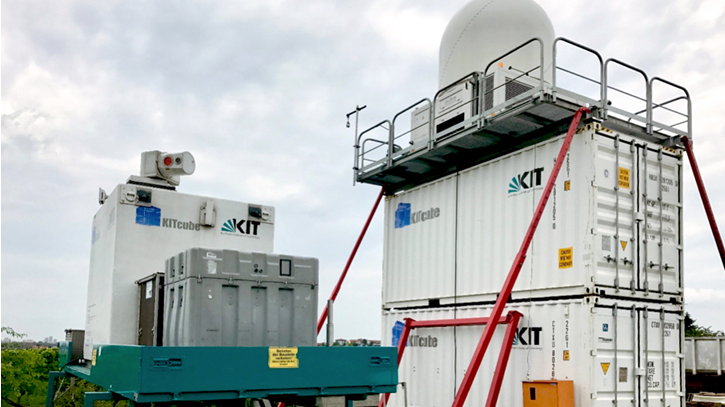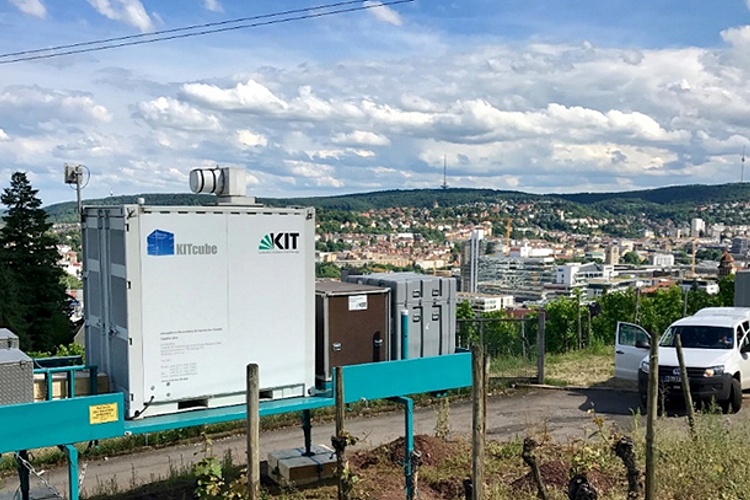Significant for air quality: understanding wind fields in the city
| Photo: Andreas Wieser/KIT | Photo: Andreas Wieser/KIT |
Wind and weather are decisive factors for the air quality and the climate in agglomerations. By now, climate models are still too coarse to support concrete urban planning. The question is how to urban districts, buildings and street canyons must be planned to achieve positive effects for air quality.
Innovative urban climate models of the major project [UC] 2 could answer these questions soon. For the validation and application tests of the new model, long-term observations and intensive measurement campaigns will collect data on weather, climate and air quality in the cities of Berlin, Hamburg and Stuttgart. Researchers of IMK-TRO operate state-of-the-art, meteorological remote sensing instruments in Baden-Württemberg's state capital, which repeatedly hits the headlines due to poor air quality.
The city center of Stuttgart is located in a densely populated basin, which has an impact on the urban wind field and has disadvantages for ventilation and ventilation in the city. For this reason, the focal point is the exact and small-scale understanding of the wind fields. Therefore, different methods of measurement are used to collect data on the inner-city wind field and on interactions between the city and the surrounding area. Several Doppler Lidar instruments and a microwave radiometer provide information on the horizontal structure of the inner city wind field and the vertical structure of the urban boundary layer. The influence of the city on the spatial distribution of precipitation is recorded with the help of precipitation radar. These instruments are part of the IMK-TRO-operated KITcube measurement system – an integrated observation platform that enables temporally and spatially high-resolution measurements in the troposphere.
First evaluations of the intensive measurement campaign in the summer of 2017 show excellent data quality, which gives rise to the assumption of promising results. Until mid-2019, a first evaluation of the new urban climate model (www.palm4u.org) should be completed using the data collected during the intensive measuring campaigns.
For more details, have a look at the ESKP-special topic “Metropolises under pressure (in german)”:
https://themenspezial.eskp.de/metropolen-unter-druck/staedte-erforschen/windfelder-in-der-stadt/
[Working Group: Land Surfaces and Boundary Layer]


